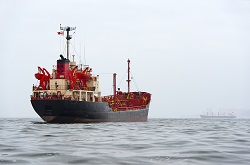Smart and adaptive materials to set a new course for the European shipbuilding industry
The ADAM4EVE project, which ended in December 2015, has identified more than 20 innovative results that will pave the way for the development of new, adaptive, modern and efficient ship designs. These new designs are more in tune with ship operating reality – which sees vessels usually spend a large part of their service life operating in situations other than their original design conditions. ADAM4EVE also took into account environment concerns such as carbon emissions and fuel consumption, as well as safety and passenger comfort. Some of the project results – such as innovative glass, coatings and insulation materials – yield significant energy savings and have been deemed mature enough for commercialisation. Other results, for example adaptive hull structures, have proven to be feasible, but will require further research, development and testing before being ready for market introduction. Key project results One of the more promising results was the development of a pneumatically-driven adaptive stern flap that was found to improve the efficiency of RoPax vessels (designed to carry wheeled cargo) and save fuel. The stern flap can be lowered and retracted depending on the changing operational environment of the ship. The technology also benefits from low installation costs. Using this technology means that, unlike conventional ship hulls, a vessel’s performance can be optimised under different conditions including varying cargo, shallow water, wind and waves. Another development conceived by the project involved creating adaptive damping systems for thrusters in order to increase comfort levels on cruise vessels. Bow thrusters often produce high levels of noise and vibration but the easily-installed active control system reduces vibrations in areas where local modes are matched with the bow thruster excitation frequency. A new generation of refrigerated cargo ships could feature innovative decks made of composite sandwich panels containing Phase Changing Materials (PCM). PCM embedded into the panel core allows minimised heat transfer and significant savings on cooling. Lightweight composite panels also create significant savings in structural weight, thereby increasing the ship’s cargo-carrying capacity. Maintenance costs are also reduced as composite materials do not corrode. A fourth innovation devised by the project team is a new energy-saving adaptive bulbous bow for inland waterway ships. Bulbous bows are used in sea-going vessels, but not for inland water vessels due to certain restrictions including water depth, and speed. Other promising innovations Finally, other results include adaptive windows for sailing yachts allow the user to adapt the transparency of the yacht’s windows to increase or reduce sunlight, and an adaptive rudder-propeller can improve the manoeuvrability of a vessel. The rudder-propeller will allow the vessel to operate at design pitch when manoeuvring in port or locked at a 90 degree pitch in vertical plane in a seagoing condition. The ADAM4EVE project has clearly shown the way on how the European shipbuilding industry can adopt new designs and technology that will enable its ships to truly become more competitive, cost-effective, adaptable, greener and safer. For further information please see: ADAM4EVE final project results
Countries
Germany



